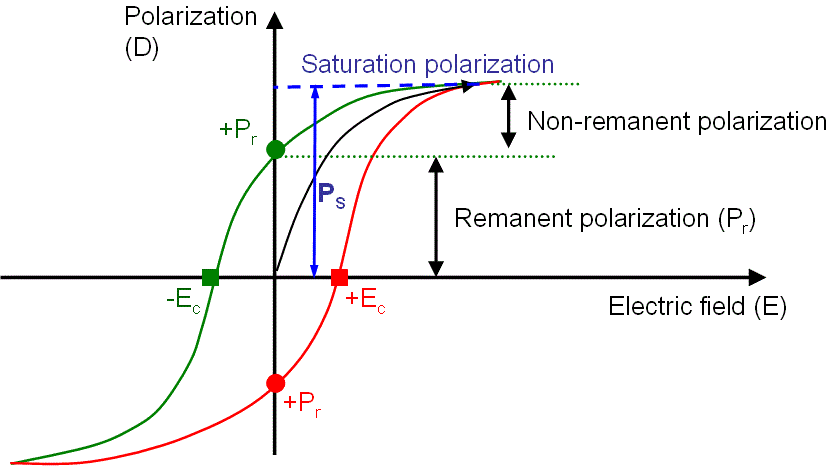Ferroelectric Dielectric Hysteresis & Hysteresis Loop - Practical Electron Microscopy and Database - - An Online Book - |
|||||||||
| Microanalysis | EM Book http://www.globalsino.com/EM/ | |||||||||
| ================================================================================= | |||||||||
Dielectric hysteresis was discovered by Valasek [1] and may be defined as an effect in a dielectric material similar to the hysteresis found in magnetic materials. In this case, the electric displacement D for one direction in the crystal (parallel to the x axis) was not only determined by the applied field E, but also depended on its previous values. A typical hysteresis loop is shown in Figure 1804a. At low electric fields and at very high electric fields a ferroelectric behaves like an ordinary dielectric with a high dielectric constant, but at the coercive field Ec polarization reversal occurs and induces a large dielectric non-linearity. At zero field (E0) the electric displacement within a single domain has two values (-Pr and +Pr), representing the opposite orientations of the spontaneous polarization. In a multiple-domain crystal the average zero-field displacement can have any value between these two extremes (-Pr < D < +Pr).
Figure 1804a. A typical dielectric hysteresis loop (Ec: coercive field; Ps: spontaneous polarization; and Pr: remanent polarization). Different from ferroelectric hysteresis, the schematic illustrations in Figure 1804b show D-E loops of four non-ferroelectric dielectrics.
Figure 1804b. D-E loops of four non-ferroelectric dielectrics: (a) Linear lossless dielectric, (b) Linear lossy dielectric, (c) Non-linear lossless dielectric, and (d) Non-linear lossy dielectric.
[1] Valasek, J. (1921). Piezo-electric and allied phenomena in rochelle salt. Phys. Rev., 17, 475.
|
|||||||||
| ================================================================================= | |||||||||
|
|
|||||||||
